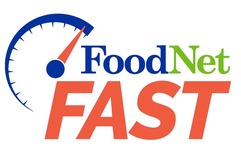New Tool to Access Foodborne Illness Data
|
CDC created FoodNet Fast to share foodborne disease data so people and organizations can quickly and easily learn how many cases occurred in certain areas or over certain time periods, which groups were affected, and how the number of cases changed over time. FoodNet covers 15% of the U.S. population, or about 49 million people. FoodNet conducts surveillance in 10 sites for infections with nine bacterial and parasitic pathogens transmitted commonly through food, and for hemolytic uremic syndrome. By estimating the number of foodborne illnesses and monitoring changes in incidence over time, FoodNet provides a foundation for food safety policy and prevention efforts in the United States. |
CDC Features
New: Say No to Raw Dough!
|
For many people, the holiday season is the perfect time to gather in the kitchen and share delicious baked foods and desserts. Read Say No to Raw Dough to learn how to handle raw dough safely, and why you shouldn’t taste any uncooked dough or batter that contains raw flour or raw eggs. Not even a nibble! |
|
Holiday Food Safety Tips
|
Feasting with family and friends is part of many holiday celebrations. Read Food Safety Tips for the Holidays to learn simple tips to follow to keep safe from food poisoning, or foodborne illness, during the holidays. |
|
Want to share these features or other syndicated CDC content through your website or blog? Get them from CDC’s public health media library.
Article: E. coli investigation led to key changes
A new article revisits the 2006 outbreak of E. coli O157 infections associated with eating bagged fresh spinach, which sickened 225 people in 27 states. The outbreak focused attention on the importance of strengthening foodborne disease surveillance in all states, and led to key changes in how federal and state public health agencies work to prevent foodborne disease and detect outbreaks. It also launched an independent collaborative approach to produce safety research. Read the article.
New Fact Sheet: System for Enteric Disease Response, Investigation, and Coordination
|
|
Blog: When Restaurant Food Handlers are Sick
A new blog from CDC’s National Center for Environmental Health discusses strategies for preventing restaurant food handlers from working while sick, which is critical to reducing foodborne illness and outbreaks.


 CDC’s new interactive tool,
CDC’s new interactive tool,  A new
A new